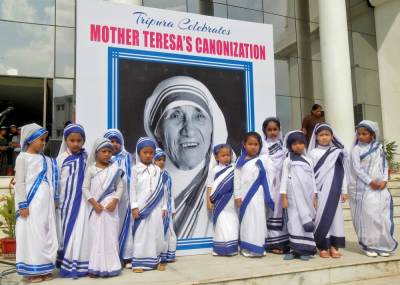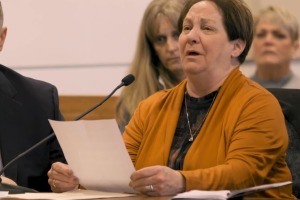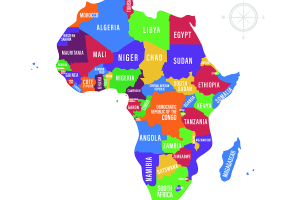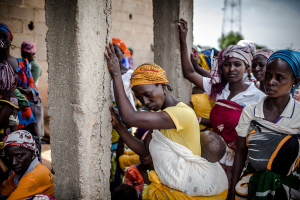Mother Teresa: A spiritual hero for any age

On Sept. 5, 1997, one of the most remarkable women produced by the 20th century passed away after living a truly remarkable life during her 87-year sojourn among us. Her name was Mary Teresa Bojaxhiu, known to the world as Mother Teresa. Born in obscurity in what is now Albania in 1910, she felt an early calling to full-time service to the church and joined a Roman Catholic religious order while still in her teens.
Mother Teresa was best known for her extensive charitable work in the slums of Calcutta. She founded a religious order, which grew to a membership of 4,500 nuns and has been active in just over 133 countries, mainly managing homes for people who are dying of leprosy, tuberculosis, and HIV/AIDS. Her religious order also runs orphanages, schools, mobile clinics, dispensaries, and soup kitchens in outreach to the poorest of the poor.
Mother Teresa has received extraordinary worldly recognition for her charity work, including the 1979 Nobel Peace Prize. She requested the cash prize accompanying the Nobel to be given to her charitable work and expenses of the annual Nobel award dinner ($192,000) be donated to the poor of India.
The very diminutive Mother Teresa described herself: “By blood, I am Albanian. By citizenship, I am Indian. By faith, I am a Catholic nun. As to my calling, I belong to the world. As to my heart, I belong entirely to the Heart of Jesus.”
Pope Paul VI awarded her the inaugural Pope John XXIII Peace Prize in 1971 and after death, Mother Teresa progressed quickly to canonization as “Saint Teresa of Calcutta” on Sept. 4, 2016.
When Mother Teresa was being considered for the Nobel Peace Prize, Malcolm Muggeridge, the truly captivating late convert from atheism to Christianity, described Mother Teresa and her order as having become “a sort of powerhouse of love in the world” who “was a counterforce to the power mania, cupidity, and egotistic pursuits out of which violence, individual and collective, in all its forms, comes.”
I had the opportunity to meet and spend an entire Sunday afternoon with Malcolm Muggeridge during my sojourn in Oxford and I consider it to be one of the most memorable four hours of my three-year stay in England.
Muggeridge had done a BBC documentary on Mother Teresa, "Something Beautiful for God," in 1969, which became the basis for a book by the same title in 1971. Muggeridge’s documentary and book helped bring Mother Teresa’s ministry to a much wider audience and it was obvious to anyone who discussed her with him (as I did) that she had tremendously impacted his own personal spiritual life in profoundly positive ways.
Mother Teresa and her sisters had a tremendously impactful ministry among HIV/AIDS patients worldwide but were especially impactful in America. She and her charity opened a hospice for people with AIDS and other terminal illnesses in Washington, D.C., followed up by additional hospices in San Francisco, Los Angeles, and Denver where they ministered to tens of thousands of terminal patients.
Her ministry to AIDS victims makes me wonder yet again about how transformative it would have been had Evangelicals similarly embraced such a ministry to AIDS victims. Does anyone doubt that if Jesus had been walking the earth during the AIDS epidemic He would have been volunteering to minister to and nurse AIDS patients? If we had so ministered in Jesus’ name, we would have a different country today than we do.
When Mother Teresa was criticized for doing her ministry in the name of Christ, she responded, “I’m not a social worker. I don’t do it for this reason. I do it for Christ.”
Of course, one main reason Mother Teresa is held in such enormous regard in America is because of her unabashed, uncompromising, and eloquent defense of unborn human beings from the moment of conception onward.
During her Nobel Peace Prize acceptance speech on Dec. 10, 1979, in Oslo, Norway, speaking to the world’s international elite, Mother Teresa spoke from her tender and wonderful heart:
“The greatest destroyer of peace today is the cry of the innocent unborn child. For if a mother can murder her own child in her own womb, what is left for you and for me to kill each other? ... Nobody speaks of the millions of little ones who have been conceived to the same life as you and I, to the life of God, and we say nothing, we allow it. To me the nations who have legalized abortion, they are the poorest nations. They are afraid of the little one, they are afraid of the unborn child, and the child must die because they don’t want to feed one more child, to educate one more child, the child must die.”
Seldom, if ever, has there been a more beautiful and bold example of speaking truth to power. And she was just warming up. Mother Teresa then challenges her audience, which includes numerous heads of state, literally the princes and princesses of this world,
“… today, let us make a strong resolution, we are going to save every ... unborn child, give them a chance to be born ... we are fighting abortion by adoption, and the good God has blessed the work so beautifully that we have saved thousands of children ... let us all pray that we have the courage to stand by the unborn child, and give the child an opportunity to love and to be loved, and I think with God’s grace we will be able to bring peace in the world.”
And then she concluded her address to that August Nobel gathering with this challenge:
"And if we love … we will try to do something. First in our own home, our next-door neighbor, in the country we live, in the whole world. And let us all join in that one prayer. God give us courage to protect the unborn child, for the child is the greatest gift of God to a family, to a nation and to the whole world. God bless you!"
Mother Teresa’s life of sacrifice and love for others, combined with her matchless courage and conviction, made her a particularly compelling figure in a time when too many of our leaders were moral relativists.
On Feb. 3, 1994, Mother Teresa was invited to address the extremely prestigious National Prayer Breakfast in Washington, D.C.
She began by praying, “Make us worthy, Lord, to serve our fellow man throughout the world who live and die in poverty and hunger. Give them through our hands this day their daily bread, and by our understanding love, give peace and joy.”
Then with President Clinton and First Lady Hillary Clinton sitting at the head table, along with congressional leaders of both parties, she articulated a prophetic voice to our nation.
Not intimidated in the least by her surroundings, she immediately got right to the point, just as she had during her Nobel speech two decades earlier.
Mother Teresa reminded her audience (if they needed reminding, given her nun’s habit and the fact she was speaking at the national “prayer” breakfast), she was a transcendent religious figure by referencing her favorite saint, Francis of Assisi, leading the assembled prayer breakfast attendees in reciting Francis’ famous “prayer of peace” which begins, “Lord, make me a channel of your peace.”
She then reminded the assembled gathering that Jesus came to bring a new kind of peace. “He came not to give the peace of the world, which is only that we don’t bother each other. He came to give the peace of the heart which comes from loving, from doing good to others.”
Citing the biblical narrative of the Virgin Mary and her cousin Elizabeth, she noted that Jesus, while “still in the womb of Mary brought peace to John the Baptist who leapt for joy in the womb of his mother Elizabeth. The unborn was the first one to proclaim the coming of Christ.” (cf Lk. 1:39-45)
Her eloquence on the abortion issue was magnificent.
“But I feel that the greatest destroyer of peace today is abortion ... if we accept that a mother can kill her own child, how can we tell other people not to kill one another?”
She then said, “By abortion, the mother does not learn to love, but kills even her own child to solve her problems. And, by abortion, the father is told that he does not have to take any responsibility at all for the child he has brought into the world.”
She then observes, “Any country that accepts abortion is not teaching its people to love one another, but to use any violence to get what they want. This is why the greatest destroyer of love and peace is abortion.”
At this point, one could not help but notice that Hillary Clinton, sitting at the head table, not more than 8 feet away from Mother Teresa at the podium, was growing increasingly agitated extremely flushed from the neck up.
Then Mother Teresa said the following words:
“Please don’t kill the child. I want the child. Please give me the child. I am willing to accept any child who would be aborted and to give that child to [a] married couple who will love the child and be loved by the child.”
I really thought that Hillary Clinton might spontaneously combust into flame right there on the podium. I do not think I have ever seen such pure, unadulterated hatred and rage on a human countenance before or since that moment. I was truly concerned that first, Hillary might physically attack the diminutive Mother Teresa on stage, or alternatively, Hillary might have a stroke right there at the head table.
It was a clarifying moment for me. As I contrasted the peaceful serenity of Mother Theresa’s countenance with Hillary’s purplish-red, contorted features, I understood in a new and deeply spiritual way that this is not a debate between right and wrong, but rather a spiritual struggle between good and evil.
Mother Teresa then challenged the audience, which was eerily silent in the presence of such godliness:
“If we remember that God loves us, and that we can love others as He loves us, then America can become a sign of peace to the whole world, be a sign of joy. From here, a sign of care for the weakest [of] the weak, the unborn child, must go out to the world. If you become a burning light of justice and peace in the world, then really you will be true to what the founders of this country stood for.”
All I could say then, and now, is Praise God and may God bless America — and make us a country which God can bless.
Dr. Richard Land, BA (Princeton, magna cum laude); D.Phil. (Oxford); Th.M (New Orleans Seminary). Dr. Land served as President of Southern Evangelical Seminary from July 2013 until July 2021. Upon his retirement, he was honored as President Emeritus and he continues to serve as an Adjunct Professor of Theology & Ethics. Dr. Land previously served as President of the Southern Baptist Convention's Ethics & Religious Liberty Commission (1988-2013) where he was also honored as President Emeritus upon his retirement. Dr. Land has also served as an Executive Editor and columnist for The Christian Post since 2011.
Dr. Land explores many timely and critical topics in his daily radio feature, “Bringing Every Thought Captive,” and in his weekly column for CP.




























